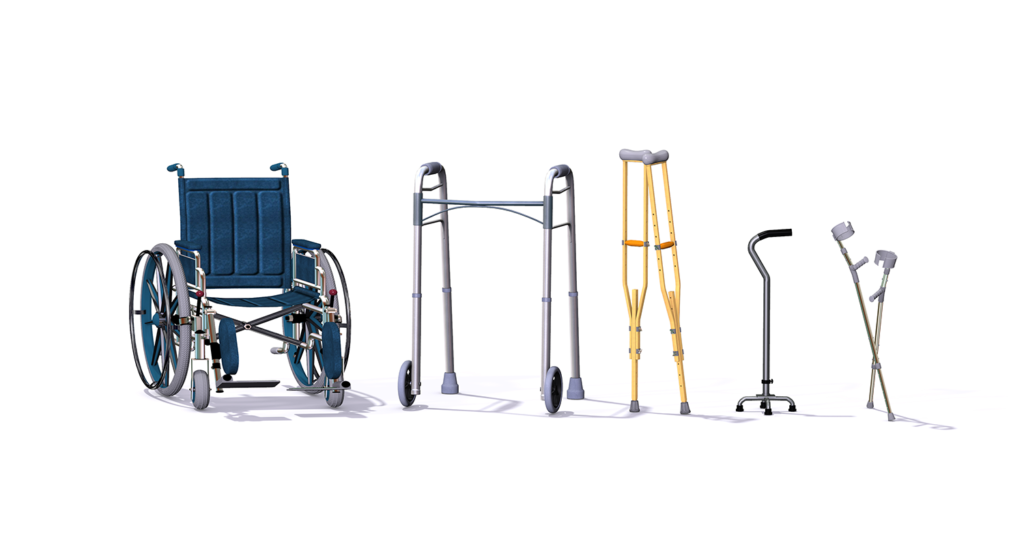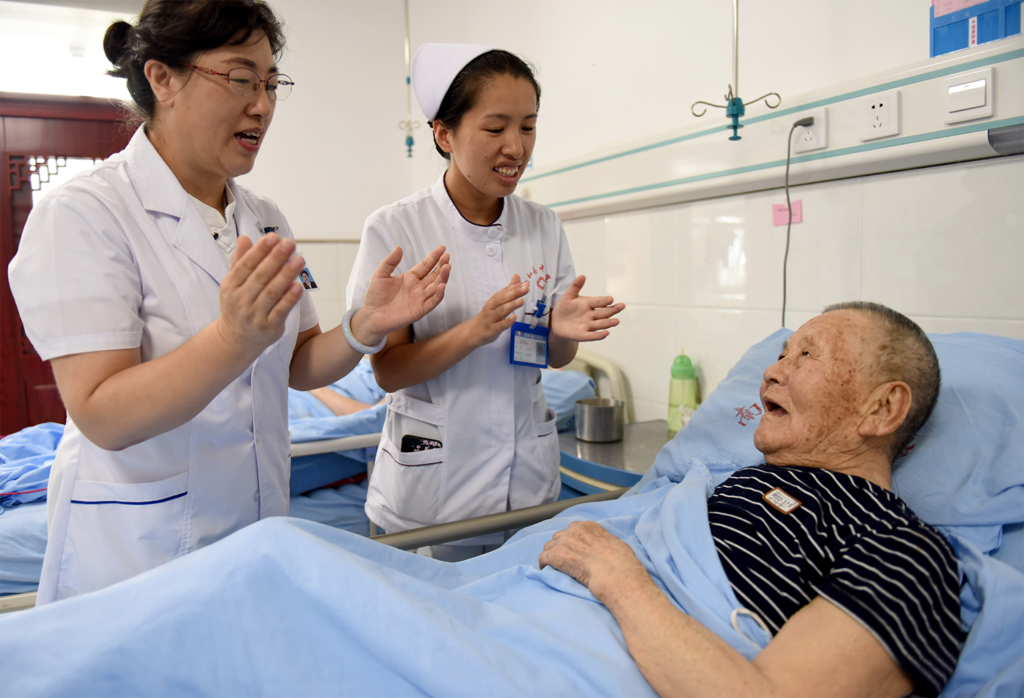
Challenges and opportunities in the Chinese market
As an essential part of China’s fast-growing medical industry, the rehabilitation market has witnessed vigorous expansion in recent years, with tremendous unexploited potential. The increasing incidence of diseases and conditions, growing public awareness of rehabilitation medicine, the demand for beds, and the ageing of society are all crucial factors driving the sector. Meanwhile, a favourable policy environment has provided strong support for sound rehabilitation services. Zhao Yuqing of Care Alliance probes into the opportunities in China’s rehabilitation sector brought about by this rapid development in market demand.
Current status of rehabilitation care internationally
A comprehensive three-tiered network is a common model for rehabilitation services in developed countries and regions. Currently, there is no uniform approach to rehabilitation provision across the European Union (EU), with significant differences between member states in terms of policies, facilities, eligibility and financing.
In the United States (US), the system is broadly divided into acute rehabilitation, acute post-treatment, and long-term care institutions. In such a system, the division of labour and definition of rehabilitation are clear, where institutions cooperate with each other through reimbursement policies varied in proportion, hence effectively alleviating pressure on emergency hospitals.
In order to finance this system, US citizens are burdened by commercial insurance. Differing from public health insurance in China and Japan, which covers their whole populations, medical insurance in the US mainly covers two groups: those aged 65 and over; and those with low incomes. Medicare covers the medical care and insurance of the elderly group, while Medicaid focuses on rehabilitation services for the low-incomed.
In summary, the US rehabilitation institutions are characterised by precision, segmentation, full coverage of medical insurance, and independent rehabilitation institutions taking on pivotal roles.
Development of China’s rehabilitation industry
In China, rehabilitation medicine is still in the early stages. At present, the country sees an annual increase of about 13 million patients with rehabilitation needs, including cerebral thrombosis/infarction/hemorrhage, heart disease, spinal cord injury, fractures, joint replacement and other conditions. At the same time, as the ageing problem in society worsens, and the pace of life accelerates, the incidence of related medical conditions has also increased significantly. Moreover, China’s levels are expected to continue to rise in the next few years until they near those of developed countries such as the US, resulting in a corresponding increase in patients in need of rehabilitation.
According to the China National Commission on Ageing, as of mid-2019, the number of people in the country over 60 years old is 190 million. Over the next 20 years, that is expected to increase annually by 10 million people. By 2050, the elderly population will account for one-third of the entire population in China.
According to the 2013 China Statistical Yearbook on Health and Family Planning, by the end of 2012, there were 322 national specialised rehabilitation hospitals, accounting for only 6.9 per cent of hospitals nationwide; among them, 61 had a bed capacity of between 100–199. At that same time, the number of rehabilitation beds nationally was 72,626, accounting for only 1.8 per cent of the total.
In general, rehabilitation resources in China are low in both quantity and quality, with uneven distribution, poor service and an insufficient supply of professionals of high calibre. As a result, patients with rehabilitation needs often miss the best window for recovery.
At the same time, the rehabilitation service system is incomplete, and the supporting policies weak. All these factors combined mean that China’s current rehabilitation services capacity cannot meet the needs of the people. The whole industry requires active investment of social capital, so as to improve facilities and bestow patients with prompt and high-quality services, thus releasing national medical resources of the rehabilitation burden.

Photo: Zhu Xudong, Xinhua
Main categories of Chinese rehabilitation institutions
Rehabilitation departments in public hospitals
At present, the main provider of rehabilitation services in China are still the dedicated departments in public hospitals. However, only Grade A hospitals in first-tier cities have rehabilitation departments with relatively complete personnel, equipment and technical strength, and beds are usually extremely scarce (about 30–40 beds or less). Due to the limited number of beds and the strict admission requirements imposed by general hospitals, patients usually cannot remain for any longer than 21 days. In these circumstances, patients’ needs for a complete rehabilitation system cannot be met.
Public rehabilitation specialist hospitals
Only a few rehabilitation hospitals in China are large-scale, providing from 200 to 700 beds, and offering comprehensive professional rehabilitation treatment and support facilities for various needs. Due to the high demand and the low cost of medical care when covered by insurance, these hospitals constantly run at near full or even over capacity.
Rehabilitation departments in private hospitals
At present, only first-class private hospitals and foreign-funded hospitals have rehabilitation departments, which are generally small, with only about 20 beds and a few doctors. Since these are located inside the general hospital, they also fall under the hospital’s restrictions regarding the average length of stay. Also, only some of these private hospitals are eligible for coverage by public medical insurance. Positioned as ‘designated’ hospitals, they align their prices with the national medical insurance.
Private rehabilitation specialist hospitals
There are only a few private rehabilitation specialist hospitals in China. Most offer simple TCM healthcare services under the banner of rehabilitation, with almost no modern treatment. As stated earlier, there is tremendous potential demand in the rehabilitation sector, especially the mid- to high-end markets. Therefore, private rehabilitation specialist hospitals should focus on building up talented teams, as well as establishing their hospital brand and patient channels.
In the future, private rehabilitation care might take the form of chain facilities. As academic achievements in this field are almost non-existent, research into the chain management of rehabilitation hospitals would be of great significance from the perspective of both investment and operations. Chain hospitals make the sharing of resources possible in terms of content and form, which would help elevate technical and management levels of the facility. This could immensely enhance hospitals’ overall brand image, help patients receive medical treatment, and save on social costs.
Conclusion: China’s rehabilitation opportunities
Throughout the past 30 years of development, China’s rehabilitation sector has made considerable strides, particularly in recent years. This growth is overtly manifested in the following areas:
- training mechanisms: subjects related to cultivating rehabilitation doctors and therapists have opened in several colleges;
- raised awareness of rehabilitation: the growth in demand for treatment is substantial across the country, and bed occupancy rate is high;
- increased number of prominent rehabilitation institutions: hospitals at all levels are developing, such as the China Rehabilitation Research Centre, Beijing United Family Rehabilitation Hospital, Care Alliance Rehabilitation Hospital, and Sichuan China 81 Rehabilitation Centre;
- increased reimbursement ratios and items in public medical insurance: nine modern rehabilitation reimbursement items were added nationwide, and;
- increased patient numbers and clinician recommendations: early intervention was carried out in some hospitals, such as the Huashan Rehabilitation Hospital and Chengdu Second People’s Hospital.
Leading rehabilitation institutions have also been set up in cities such as Beijing, Shanghai, Shenzhen, Nanjing and Chengdu. As these factors keep pushing rehabilitation development into the fast lane, the sector will expand exponentially in the near future.
Care Alliance operates post-acute rehabilitation hospitals and clinics, geriatric hospitals and long-term nursing facilities. It is committed to promoting modern principles and practices as well as cultivating talent in post-acute care in China.


Recent Comments